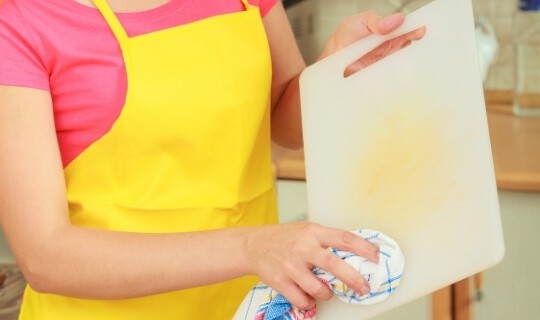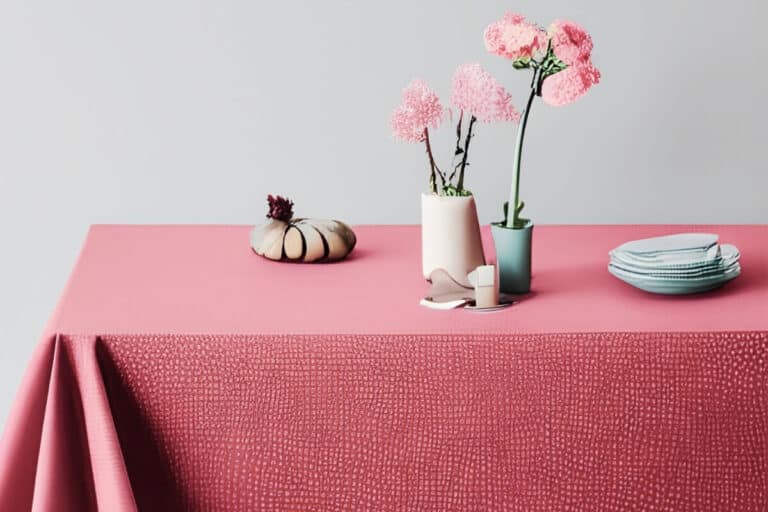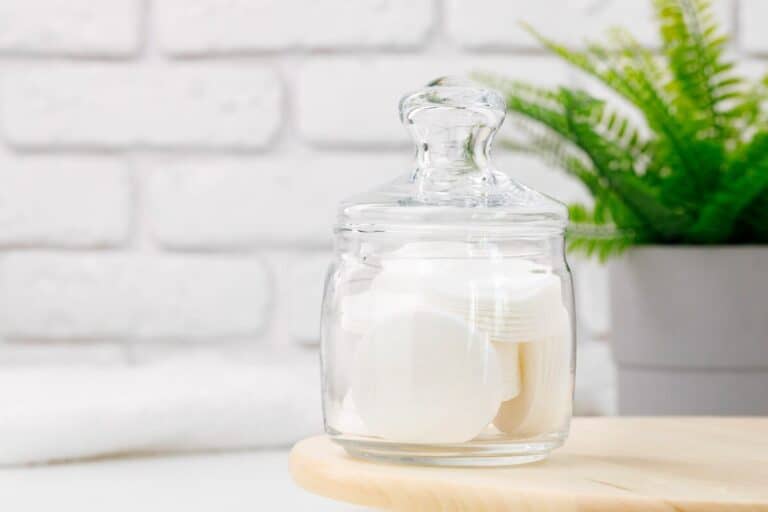How to Clean and Disinfect a Plastic Cutting Board
How To Clean and Disinfect Plastic Cutting Boards
How often do you clean and disinfect your plastic cutting board? If the answer is not very much, then you may be storing a breeding ground for harmful bacteria.
Cleaning a plastic cutting board may not seem like it requires much effort but it should be done as often as possible for safety purposes. Here are some tips on how to clean and disinfect a plastic cutting board properly.

(This page may contain affiliate links you can read the full disclosure here)
How To Clean A Plastic Cutting Board
Firstly you want to remove any food residue or dirt from the surface of your cutting board.
The best way to clean a plastic cutting board is by using warm or hot, soapy water. This will get rid of all the dirt and grime that may have been left behind from various food items. Rinse thoroughly with hot or cold water in order to remove any soap residue as well!
If you are looking for an even more thorough way to clean your cutting board, then you can either run it through a dishwasher on high heat or place the plastic cutting board in boiling water for a few minutes to disinfect.
How Often Should You Clean Your Cutting Board?
It is recommended to clean your cutting board at least once a day if you use it all the time. If not, then try cleaning your plastic cutting board whenever it becomes dirty or wet.
How To Disinfect Plastic Cutting Boards Naturally
Vinegar is a great non-toxic way to disinfect your cutting boards. Fill a spray bottle with diluted vinegar and apply it to the surface of your plastic board, then allow it to sit for about ten minutes before rinsing off. You can also soak the boards in a mixture of water and vinegar for several hours, this will also help to whiten stained boards too!
If you have more than one cutting board that needs cleaning at once, put them in the dishwasher or boil them all together!

Bleaching Cutting Boards
Bleach is another great way to disinfect your cutting boards, but it also contains toxins. In order to safely bleach a plastic cutting board, you need thorough soaking in bleach as well as scrubbing with soap. Soak the boards in water with some bleach and leave to soak for an hour. Make sure to rinse really well after!
Whitening Stained Cutting Boards
You bought lovely chopping boards and now they are stained! Well, thankfully there are a few things that you can do to get your board back to white.
First, rub the stained areas with either salt or baking soda and then rinse off the residue (this is great for tomato stains!). If this doesn’t work, try using lemon juice on your board while it’s wet before rinsing! Finally, as a last resort, try using bleach on your cutting board, but be sure to rinse really well afterward!
How To Store Your Cutting Board

Normally we don’t give much thought as to how we store chopping boards, but the best way to store your cutting board is to wrap it in a dishtowel and store it on the back of a kitchen cabinet in a holder like this one.
Plastic Vs Wooden Cutting Boards
Plastic boards are a great option if you don’t want to mess with the maintenance of wood or metal.
They have many pros, including being lightweight and non-porous. Disadvantages include potential discoloration due to stains, surface scratches from knives, and less variety in shapes/sizes available when compared with wooden cutting boards.
Wooden cutting boards are a more traditional option, and if treated with oil or mineral oil they will not absorb stains.
The most popular type of wood for cutting boards is maple, but many other types can be used including bamboo, oak, pine, redwood, and walnut.
In addition to being durable and easy to clean, wooden boards also offer a variety of shapes. Plus they look really good!
Conclusion
The importance of cleanliness when handling food is a given, but how often do we think about the tools that are used to prepare our meals? Keeping your cutting boards sanitary and free from bacteria will go a long way in ensuring you’re not spreading illness.
It only takes some hot water with soap, vinegar, or bleach for disinfection purposes, and storing them properly to keep harmful microorganisms at bay!
These few simple steps can help ensure safe cooking practices and avoid cross-contamination between raw meats (or anything else) on your kitchen countertops.







